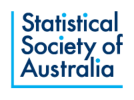What goes into a global temperature number? Blair Trewin, Senior Research Scientist at the Bureau of Meteorology, is the high-impact events lead for the annual World Meteorological Organization State of the Climate Reports. He talked about the data and methods which went into the assessment of observed global temperature changes in the recent Intergovernmental Panel on Climate Change (IPCC) Sixth Assessment Report.
When temperatures are collected over long periods, such as over several decades or even longer than 100 years, there are many issues that can make comparing temperatures over this time span challenging. The first is changes in instrumentation, from manual measurements to automated weather stations. This was illustrated by the historical weather station at the Adelaide site. Blair stepped us through examples of these challenges in a very interesting and amusing way. For example, the old-fashioned way of measuring temperatures at sea by hauling buckets onto the ship deck led to a local cooling effect when water spilled. Nowadays sea temperatures are measured using buoys or via a ship’s engine cooling water.
Even what appear to be subtle changes may cause shifts. For example, changes in irrigating the vegetation around one weather station caused temperatures to rise by over a degree! This was detected through a sudden, rather than gradual, shift in maximum temperatures recorded at the site. Urbanisation can also cause similar changes, usually with a more gradual shift.
Methods to deal with these challenges include parallel data collection where a planned site move occurs, such as happened in Adelaide recently. In other situations where the move is not so well planned, pairing of sites is followed by homogenization of the data. In another story, Blair described how the voluminous records left by public servants came in handy when travel claim expenses by a subcontractor were used to deduce the date when a site moved. Blair noted that on the global scale, these systematic biases tend to average out, but can make forecasting at the local level more complicated. Other issues include modelling for geographically sparse data. A homogenized Australian temperature dataset was developed (Australian Climate Observations Reference Network - Surface Air Temperature Dataset or ACORN-SAT) and this, along with similar overseas datasets, were used in the IPCC sixth report.
Finally, Blair showed as the temperature time trends from the report and noted that the upward trend in temperature is no longer linear. He briefly mentioned that different methods are now used to assess changes in temperature.
Over 20 people attended the talk online, and afterwards there were comments that the talk fascinating and that people hadn’t realised how data issues and biases can affect comparison of measurements from what appears to be the same location.
By Lan Kelly
President, SA Branch
